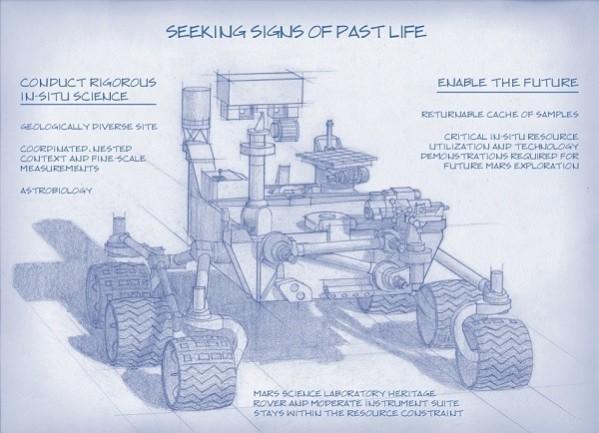
The 2020 Mars rover mission would look for signs of past life and help in picking up samples that could possibly be returned to Earth by future missions, a science advisory group announced on Tuesday.
The Mars 2020 Science Definition Team appointed by NASA has prepared a 154-page document that outlines scientific objectives for the 2020 Mars rover mission. The team composed of scientists and engineers from several universities and organisations has proposed a mission concept "that could accomplish several high-priority planetary science goals and be a major step in meeting President Obama's challenge to send humans to Mars in the 2030s," the US space agency said in a statement.
The 2020 Mars mission has been proposed after NASA's ongoing Mars rover Curiosity, which landed on Mars' Gale Crater last August, scored major success in finding out habitable environment that could have supported microbial life. But the 2020 Mars mission would take a direct approach and look for "biosignatures" - substance preserved in ancient rocks and samples, and provide scientific evidence of life on the Red Planet.
"The Mars 2020 mission concept does not presume that life ever existed on Mars," Jack Mustard, chairman of the Science Definition Team and a professor at the Geological Sciences at Brown University in Providence, said in a statement. "However, given the recent Curiosity findings, past Martian life seems possible, and we should begin the difficult endeavor of seeking the signs of life. No matter what we learn, we would make significant progress in understanding the circumstances of early life existing on Earth and the possibilities of extraterrestrial life."
The Science Definition Team has proposed that the Mars rover would collect and package as many as 31 samples of rock cores and soil that could be ferried back home in the future to perform definitive analysis of the samples. This would help inform future human exploration missions to Mars.
NASA is planning to conduct an open competition to choose payload and science instruments that would be placed on a rover similar to Curiosity. Scientists will use Curiosity's design for the new Mars rover so as to minimize mission costs as well as reduce risks. According to a Reuters report, the U.S. space agency is likely to spend about $1.5 billion, plus the launch costs for the Mars mission.
















